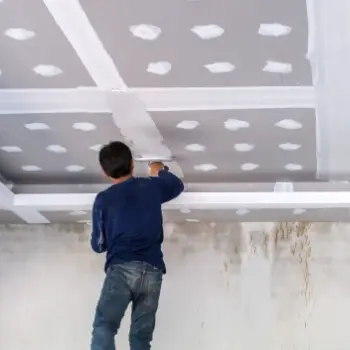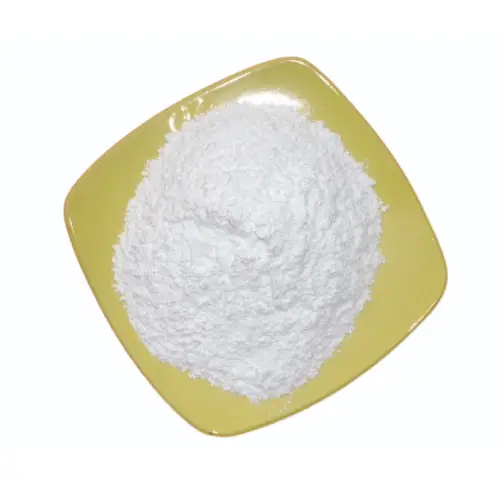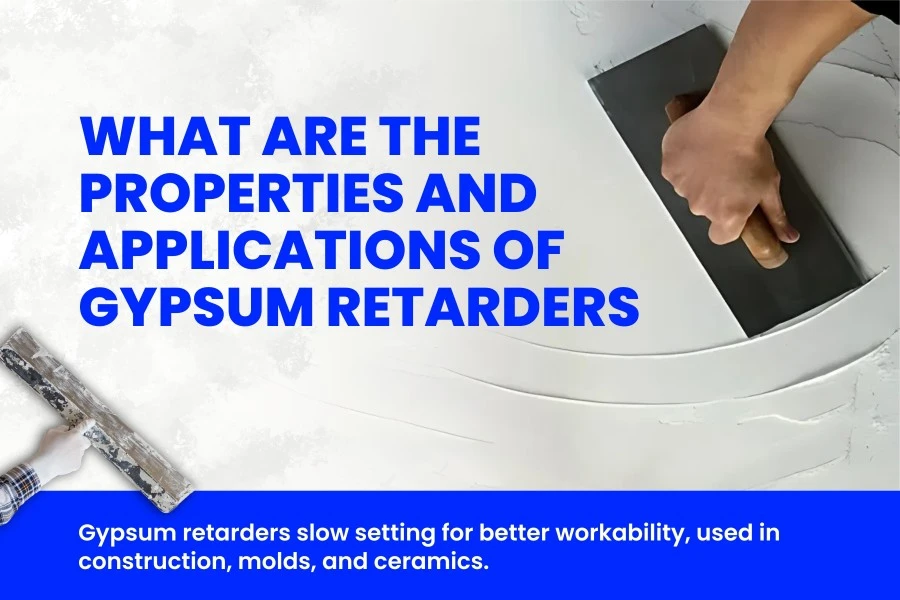Within the world of construction and building products, timing can be everything. When applying gypsum based products, the setting time, or how long it takes a gypsum product to set, becomes one of the most important factors to keep in mind to ensure efficiency, finish, and quality.
This is where gypsum retarders are useful. These small additives can control how quickly gypsum sets to allow workers the ability to work more elaborately and end up with a better quality product.
Table of Contents
This blog will review gypsum retarders and develop your understanding of their properties, mechanisms, and use in manufacturing or construction processes, so you can see how integrated they are into modern construction.
Recognizing Gypsum and its Behavior
Before discussing the properties and uses of gypsum retarders, it is important to understand gypsum.
Gypsum is a natural mineral made of calcium sulfate dihydrate (CaSO₄·2H₂O). Upon heating, the gypsum loses its water molecules and becomes plaster of Paris (CaSO₄·½H₂O). When it is mixed with water again, plaster of Paris quickly rehydrates and hardens – this is referred to as setting.
Although the setting process is invaluable to many applications, it often happens rapidly, and that is where gypsum retarders come in, to slow the process down, and give you more control and flexibility during use.
What Are Gypsum Retarders?
Gypsum retarders refer to different chemicals or additives that can delay or slow down the setting time of gypsum. They are used in both industrial and residential construction environments where the dry time is often more than sufficient, and workers need to have time to manipulate the material before it is set.
All retarders are often manufactured from organic sources such as sugars, proteins, or other organic acids. In more technical or controlled applications, scientists may use synthetic equivalents or polymer formulations.
The following characteristics of gypsum retarders make them an important component of gypsum-based formulations. Let’s take a look at some of their capabilities:
1. Delayed Setting Time
The most obvious characteristic of a gypsum retarder is the delay of setting time. Depending on formulation, a gypsum retarder can delay working time (open time) from minutes to hours.
2. Dose Sensitivity
Gypsum retarders are typically very effective in small amounts. Usually no more than 0.05% and usually not more than 0.2% of the total weight of the gypsum is required for minimally effective working time.
3. Thermally Stable
The majority of gypsum retarders can withstand heat during the manufacturing process, or during application by the worker, while still maintaining all their effectiveness.
4. Compatibility
High-quality gypsum retarders do not conflict with or work against other additives in gypsum formulations; compatible with plasticizers, binders, and water-reducers.
5. Environmentally Friendly
Many gypsum retarders are either derived from natural sources or biodegradable, making them environmentally-friendly, and according to the focus on sustainability in the development of buildings in today’s world.
6. Non-toxic and Safe
Gypsum retarders, as intended, are safe for human contact, do not release harmful fumes or residues.
These attributes of gypsum retarders ensure that they are usable and perform as intended.
How do Gypsum Retarders Work?
Knowing how retarders function adds value to their application. When gypsum and water are mixed, the gypsum begins to rehydrate and forms a crystal network. When crystals begin to form and hold water themselves, that process is defined as hardening.

Gypsum retarders function by intervening with the calcium sulfate crystals from growing. By binding itself at the active growth locations on the crystals, it minimizes the kind and development of the crystals so that the process of hardening is delayed.
As a result of delaying the hardening process, contractors have more time for mixing, molding, and finishing gypsum products, effective in high volume and complex applications.
Major Applications of Gypsum Retarders
Now that we’ve discussed their characteristics, let’s look at the uses of gypsum retarders across sectors; they have a wider span of applicability than you might think:
1. Drywall / Plasterboard
One of the largest consumers of gypsum retarders is the drywall industry. Gypsum slurry is mixed and poured into a mold and/or spread into a sheet. The slurry needs to stay workable long enough to pour, after mix time, and apply.
Why it matters: If retarders are not used, the gypsum has a strong tendency to set too quickly, with varying results for wallboard consistency and quality of surface finish; Manufacturing efficiency suffers.
2. Plaster
Gypsum plasters are used for finishing walls and ceilings. For large-scale projects, workers will require sufficient time to take their plaster and create the correct finish before it sets.
Application Benefit: Use of gypsum retarders provides greater working time and helps reduce waste while improving the finishing quality of the application.
3. Gypsum-Based Fillers and Putty
Joint compounds and wall fillers must hold their soft features while they are being applied.
Performance enhancement: When gypsum retarders are employed, potential issues with application performance resulting from premature drying or cracking are reduced because the application is smoother and less stressful when working in plaster.
4. Decorative moldings and casting
In art and architectural design, gypsum is frequently poured into molds to make a certain cast.
Why retarders are useful: They allow the crafts people to have more time working with the material and less chance of making imperfections or having air bubbles.
5. Dental & Medical Casts
Gypsum is widely used in dentistry for impressions, models, and molds. It is also used in orthopedic casts.
Precision aspect: Retarders provide a better opportunity to make more precise, bubble-free impressions and smoother finishes.
6. Ceramic & Refractory
In the ceramics industry, gypsum molds are also used for slip casting. These molds have to be the same and not have any defects.
Why use retarders: So the mold quality can get better and last longer if the setting time is controlled.
7. Cement & Mortar Products
In blended cement or specialty mortar blends, gypsum is used in order to control the setting time of cement. Although, occasionally there are other added retarders used to assist in setting time, especially in hot conditions.
Practical purpose: Helps prevent flash setting of cement, while improving workability during the construction.
Addage Gypsum Ecowhite by Sakshi Chem Sciences Pvt Ltd is a high-performance gypsum retarder designed to control the setting time of gypsum-based products. It provides smooth workability, better finishing, and improved efficiency in construction applications, ensuring consistent quality and durability.


Factors that Influence Gypsum Retarders
Although gypsum retarders have a great effect, their performance can be influenced by a few key factors:
Ambient Temperature: Higher temperatures will often shorten the time required for gypsum to set, even with the use of retarders. An additional adjustment may need to be made in dosage.
Water to Gypsum Ratio: Excessive water will dilute the retarder action, and the amount has to be precise so it can perform as intended.
Mixing Technique: When mixing, if the retarder is mixed unevenly, it will distribute unevenly, and affect the amount of time for set and quality of work.
Gypsum Type: When retarders are used in formulations with gypsum, the source can make a difference… for example, whether it is natural or synthetic, alpha or beta hemihydrate.
Other Additive Compatibilities: The retarder should be compatible with other materials in the formulation; i.e., with binders, plasticizers, colorant, etc.
A knowledge of these variables will be necessary to obtain the best results with formulating with gypsum retarders.
The Benefits of Using Gypsum Retarders
The properties of gypsum retarders, when they are use,d can provide a lot of practical benefits:
Improved Workability: The retarder gives your workers more time to spread and shape the material.
Less Material Waste: Less material is wasted if it sets too fast.
Better Finish Integrity: smoother, consistent surfaces with fewer imperfections.
Cost Saving: Less labour stress, less wasted materials = reduced cost.
Versatile Use: applicable in various gypsum-related formulations and industries.
Conclusion
In the overall world of construction and manufacture, gypsum retarders are a small ingredient. As we’ve covered, their role is anything but small.
The properties and uses of gypsum retarders are a key element in creating uniform quality, extended workability, and smooth finishes for tens of thousands of gypsum products.
From the drywall in your home to medical casts and molds, from artisan designs to modern modular construction, gypsum retarders are instrumental in taking something from powder and water to a strong, smooth, and durable finished product.
So the next time you walk into a freshly painted room or lean against a plastered wall, take a moment to reflect that a little bit of science was involved in making it “just right.”
Sagar Telrandhe is a Construction Engineer with a B.Tech in Construction Engineering & Management. Passionate about infrastructure development, project planning, and sustainable construction, he specializes in modern construction techniques, project execution, and quality management, contributing to efficient and innovative building.

